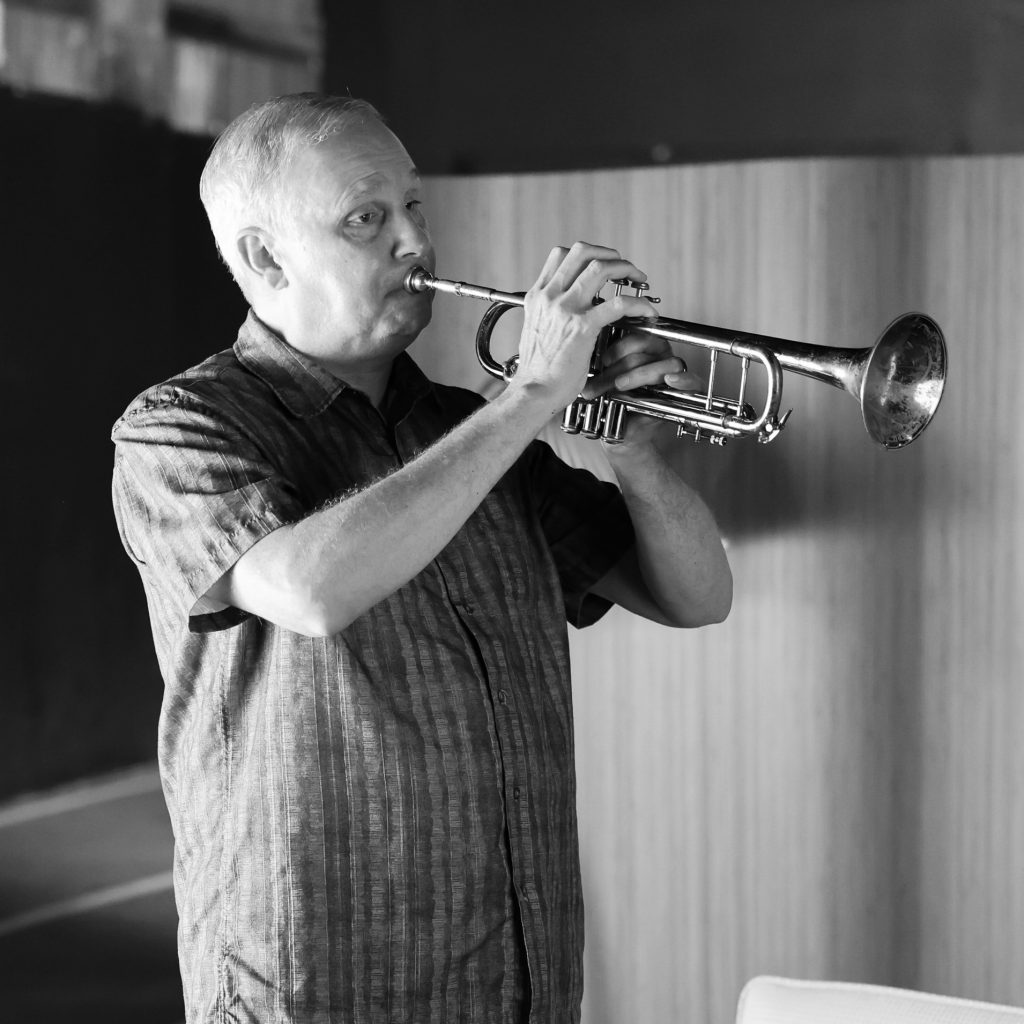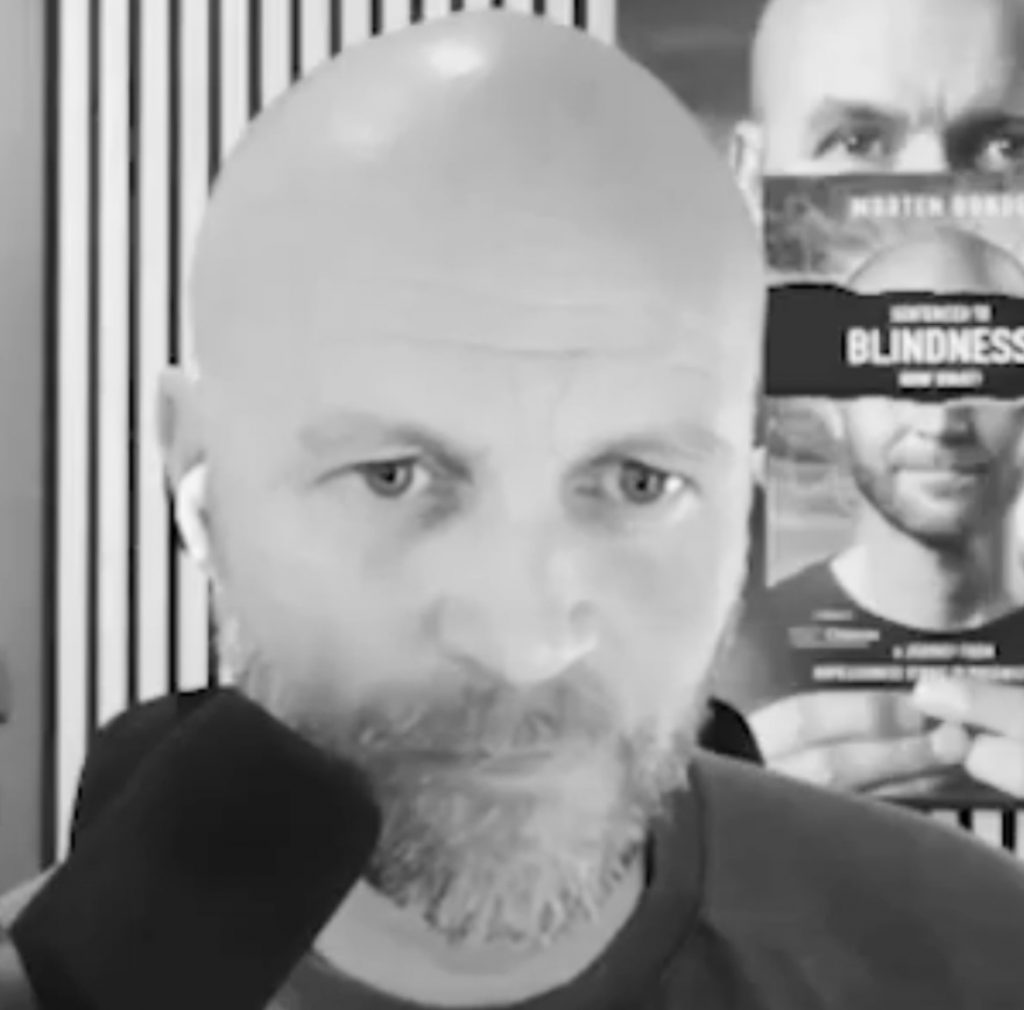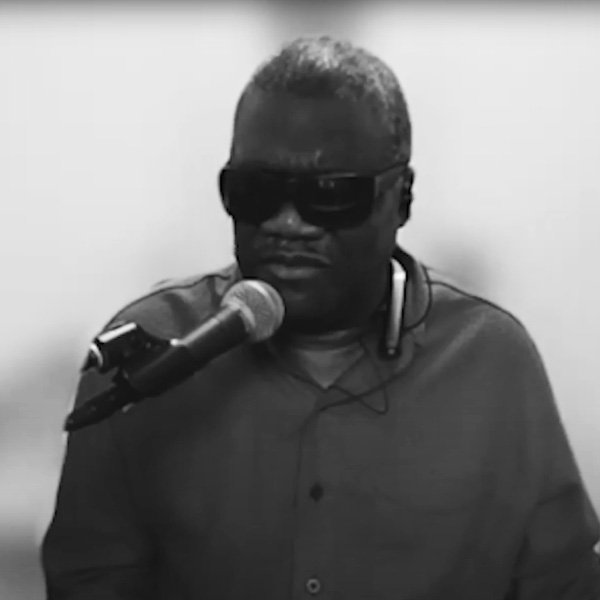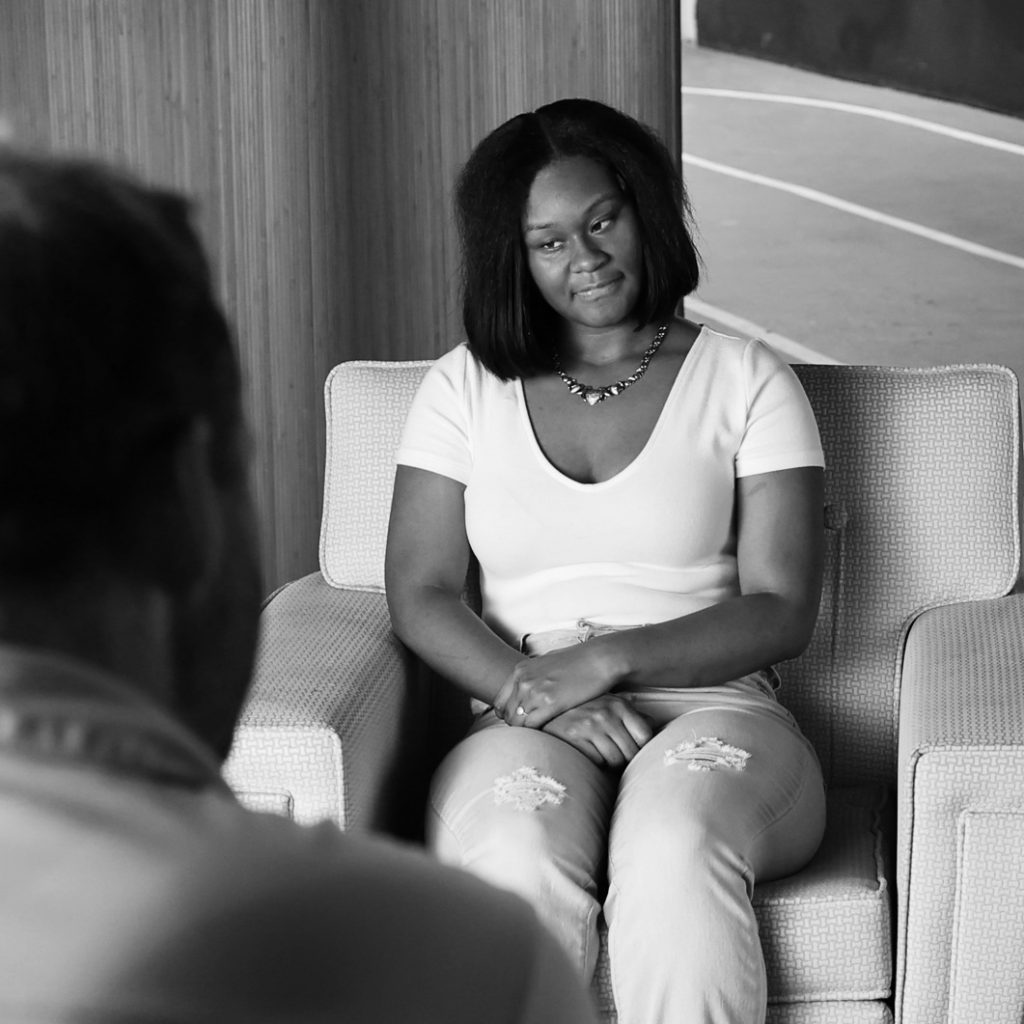WAYNE PEARCY

MIDNIGHT MELODIES
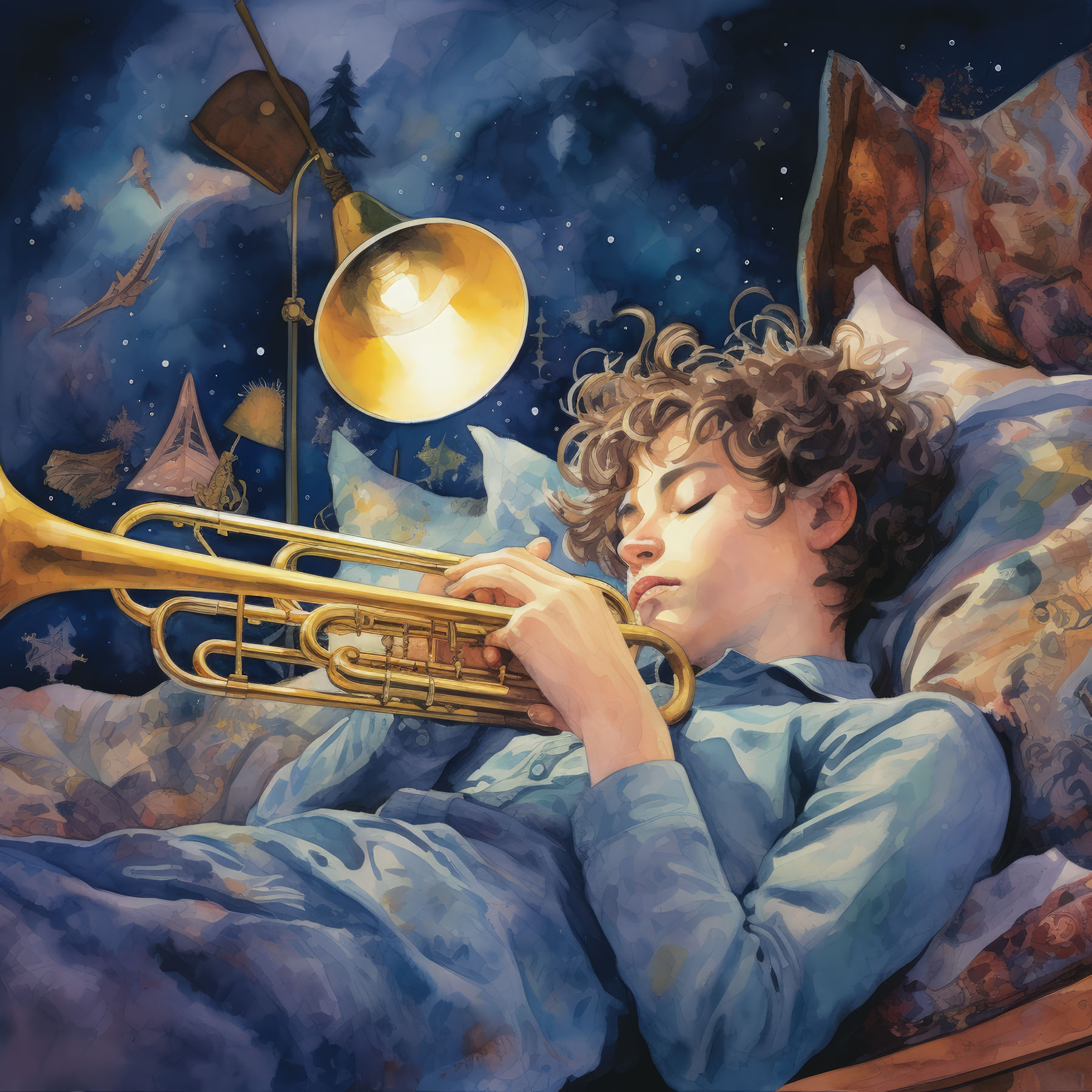
Foundational quote for image generation:
“My dad bought me this trumpet and I was so excited about it. I was so excited about it. I remember I actually slept with that horn that night. I took it out of its case and I put it in bed with me. It was like it was a toy.”
The image portrays a young boy (representing Wayne Pearcy), peacefully sleeping on his bed. He holds a golden trumpet close to him, suggesting a deep bond or affection towards the instrument. Above him, a lamppost with a glowing light bulb illuminates the scene, but rather than a regular lamppost, this one morphs into the bell of a trumpet at the top.
The backdrop displays a picturesque night sky filled with stars, while the bed itself seems to be situated amidst mountainous terrain or rocky outcrops. The overall ambiance of the image emanates tranquility, with a mix of fantasy and reality, hinting at the boy’s dreams and passion for music.
NAPKIN, PLEASE
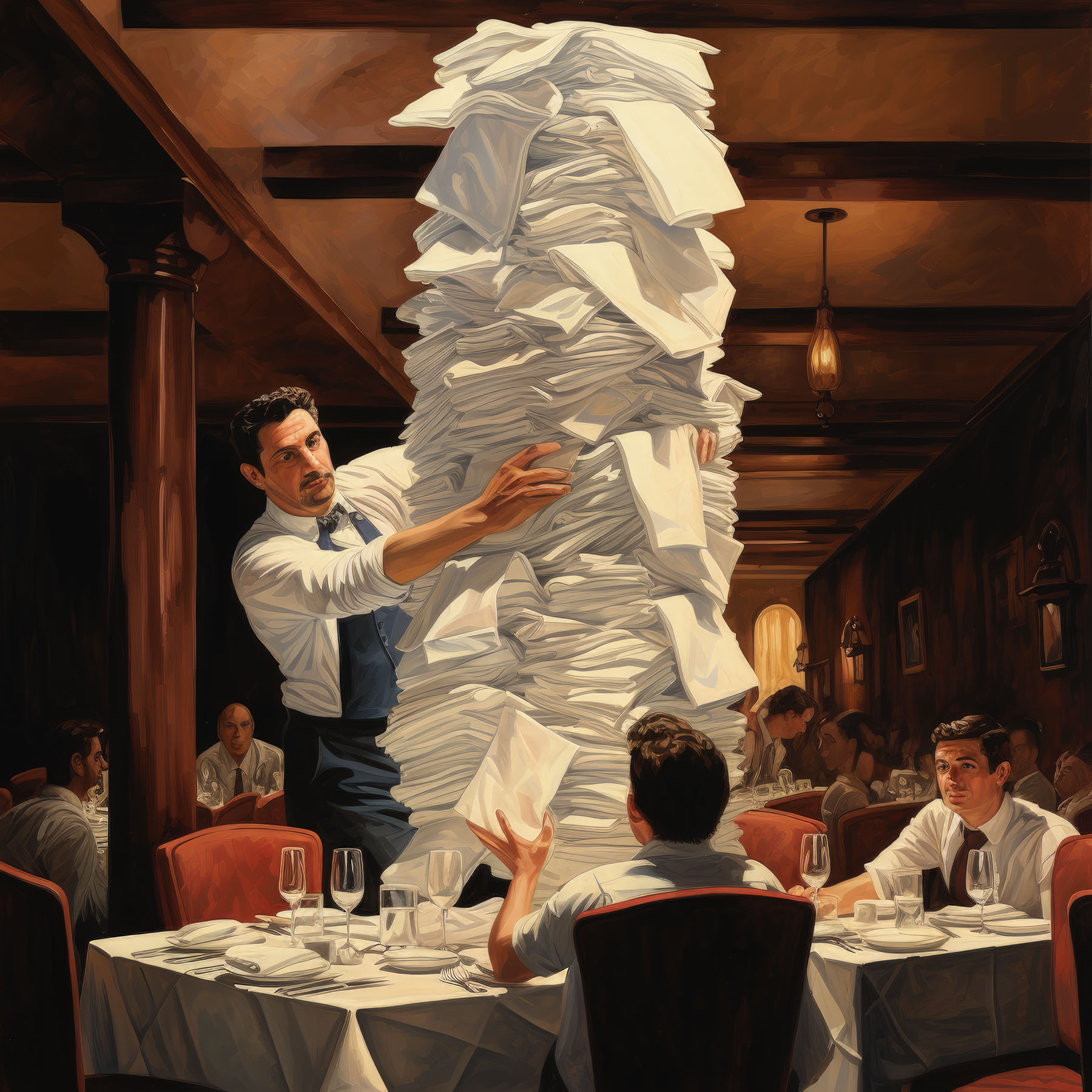
Foundational quote for image generation:
“One of those stereotypes is blind people are just inadvertently messy eaters and they’re going to need a tons of napkins. I remember going to a burger place. And I’ll ask, can I have some napkins? And they’re like, Sure. And they’ll bring me like a whole Bible’s worth of them. And I’m like, thinking to myself, I’m like, Oh my God, like, who do you think I am?”
The image displays an interior view of a restaurant with wooden paneling and warm lighting. Dining tables are neatly arranged with silverware and glasses. The standout feature of the image is a colossal stack of napkins, towering precariously in the center of the scene. The sheer volume of napkins almost reaches the ceiling and is disproportionately more than what any diner would typically need.
As a commentary on stereotypes of the blind individuals, the exaggerated pile of napkins serves as a metaphor for misconceptions sighted people may have. In this context, the overabundance of napkins is a hyperbolic representation of the stereotype that blind people might be inherently messier when eating, which of course, is false.
By displaying such an excessive quantity, the image humorously critiques the absurdity of such a stereotype, highlighting the importance of avoiding broad generalizations based on limited knowledge or understanding.
FEARLESS REQUEST

Foundational quote for image generation:
“If there are things I can do on my own I try to do them. But if there is something I know will make my life a little bit easier, I’m not afraid to go out and ask for that help, if I really think I need it, or if it would save me a few inconveniences along the way.”
This whimsical image shows a young boy (representing Wayne Pearcy) standing on a path, gazing up at a large, humanoid robot with a boxy head that glows with two luminescent eyes. The robot offers a lantern to the boy, casting a light that contrasts with the dusky environment. In the background, a dim city skyline can be seen under a star-studded night sky.
The boy can be seen as representing someone who is blind or visually impaired, and the path could represent the journey of navigating the world without sight. The act of the robot offering a lantern signifies the guidance and support that strangers can provide. The juxtaposition of the boy’s small size against the robot’s grand stature further emphasizes the vulnerability one might feel when seeking help but also underscores the significant impact that a little assistance can have.
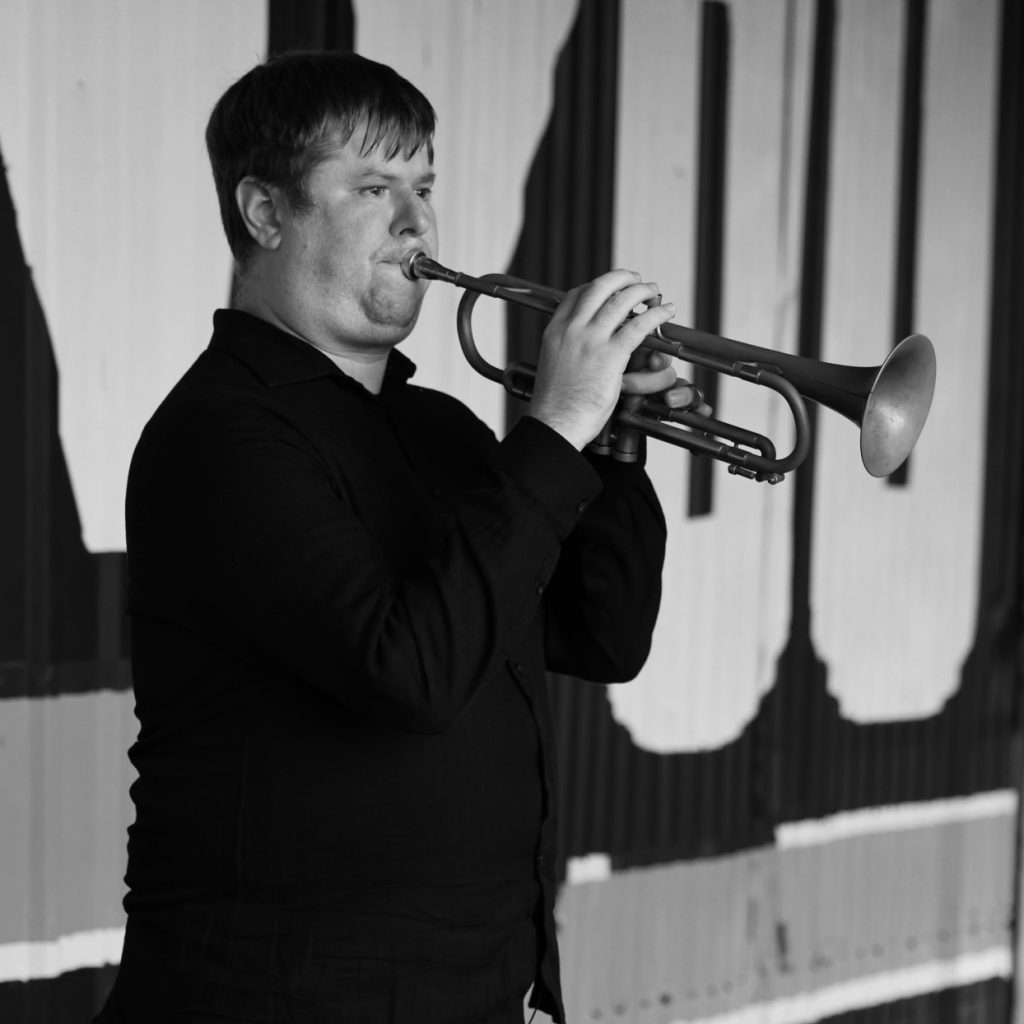
ABOUT WAYNE

WAYNE PEARCY / ANOPHTHALMIA
Trumpeter / Educator / Student
Pearcy, born fully blind, is originally a New England area trumpeter and composer who has won numerous accolades, perhaps most known by the jazz community for placing second globally as a soloist at the ITG College Jazz Competition in 2011. His rich tone and lyrical playing style have earned him studies with some of the heavy hitters in Jazz, including Tiger Okoshi, Darren Barrett, and Wynton Marsalis.
Besides jazz, Wayne has a strong interest in classical music, and he constantly works to improve his technique as a soloist. Wayne strongly believes that the performance and study of classical music is important to the success of all musicians. Therefore, it has been a privilege for him to be a part of Boston Landmarks Orchestra’s educational outreach team since 2013. Wayne’s passion for learning about the tradition of the trumpet has led him down the path of pursuing a career in historical performance. He has received recognition from some of the finest musicians in this field including Robinson Pyle, Wendy Rolfe and John Thiessen. Wayne was accepted to the American Bach Soloists Academy, a program which gives young performers an opportunity to study early music in depth as well as give them a chance to share there talents with audiences in the San Francisco area.
Also a strong advocate for assistive technology, Wayne’s work as a student and staff member at Berklee College of Music has helped the renowned institution become a top destination for visually impaired music students from around the world. Wayne served on the board of Friends in Art from 2009 to 2016. Friends in Art is an American Council of the Blind (ACB) affiliate group which offers students scholarships in the fine arts. In 2015, Wayne became involved with Partners for Youth with Disabilities, a nonprofit organization that helps match students with mentors to help with transitioning into the college environment and the workforce.
Wayne looks for opportunities to perform both genres around the Boston area. While a student at Berklee, he performed several recitals demonstrating his proficiency in both styles. He also has a jazz quintet that has been featured on Harvard University’s radio station WHRB as well as a local public access channel.
ARTISTS



